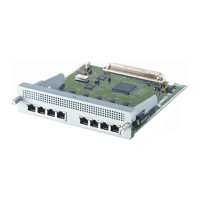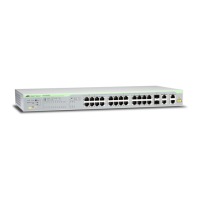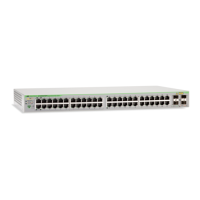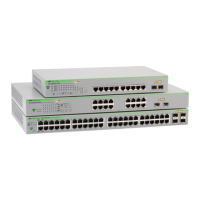Introduction DHCP Relay Agent
Software Reference for SwitchBlade x3100 Series Switches (Network Management)
7-6
7.2.2.4 Classification Rules
The DHCP Relay feature uses classifiers to extract the client's DHCP packets from the customer interfaces to
be processed by the DHCP Relay function. These classifiers are installed by the system on all interfaces that are
provisioned with a
DIRECTION of CUSTOMER and are not installed on interfaces that are provisioned with a
DIRECTION of NETWORK. The classifiers are only installed when DHCP Relay is enabled for a given interface.
DHCP Relay uses the IP stack for its communication with the DHCP server(s); this occurs through Inband
Management.
Once DHCPRELAY has been enabled, the system may generate a warning message at the user’s CLI session
stating that classifier capacity or capabilities have been exceeded on the slot(s) impacted by the provisioning
change. The user should investigate classifier-related provisioning, such as DHCPRELAY, VLAN, ACCESSLIST,
and CLASSIFIER to determine the reason for the message.
7.2.2.5 IP Filtering
DHCP Relay has an option for automatically filtering on the customer interface, based on the source IP
address. The IP address used in the filter is based on the DHCP Discover/Offer/Request/ACK exchange
between the DHCP client and the DHCP server. When an IP address is handed out, the DHCP Relay software
will create an IP “pass” filter to allow packets with the source IP address to be received from the port that was
given the IP address; all other IP packets on that VLAN are dropped.
Note: The maximum number of IP filters is eight.
7.2.2.6 DIRECTION of Interfaces
DHCP Relay can only be enabled on interfaces that are provisioned with a DIRECTION of CUSTOMER.
When an interface's
DIRECTION is changed from CUSTOMER to NETWORK, all learned IP addresses and all IP fil-
ters will be removed.
When an interface's
DIRECTION is changed from NETWORK to CUSTOMER, DHCP Relay will change the inter-
faces role from being a possible interface to the DHCP server to that of a DHCP client.
7.2.2.7 Number of DHCP Relay Instances Supported
A network access product system can support multiple instances of DHCP Relay (RFC 3046). Each instance has
mapping to a VLAN. The maximum number of DHCP Relay instances that can be supported per system is 200.
7.2.2.8 DHCP Relay / Snooping on Client Interfaces
Note: Counters are displayed and reset on an interface basis.
DHCP Relay/Snooping tracks up to 20 concurrent DHCP client/server exchanges at any one time per network
interface. If there are more than 20 concurrent DHCP client/server exchanges on any one interface, then
DHCP Relay/Snooping will overwrite one of the current client/server entries only when the client has already
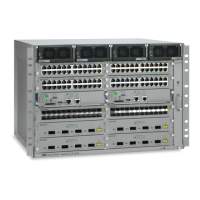
